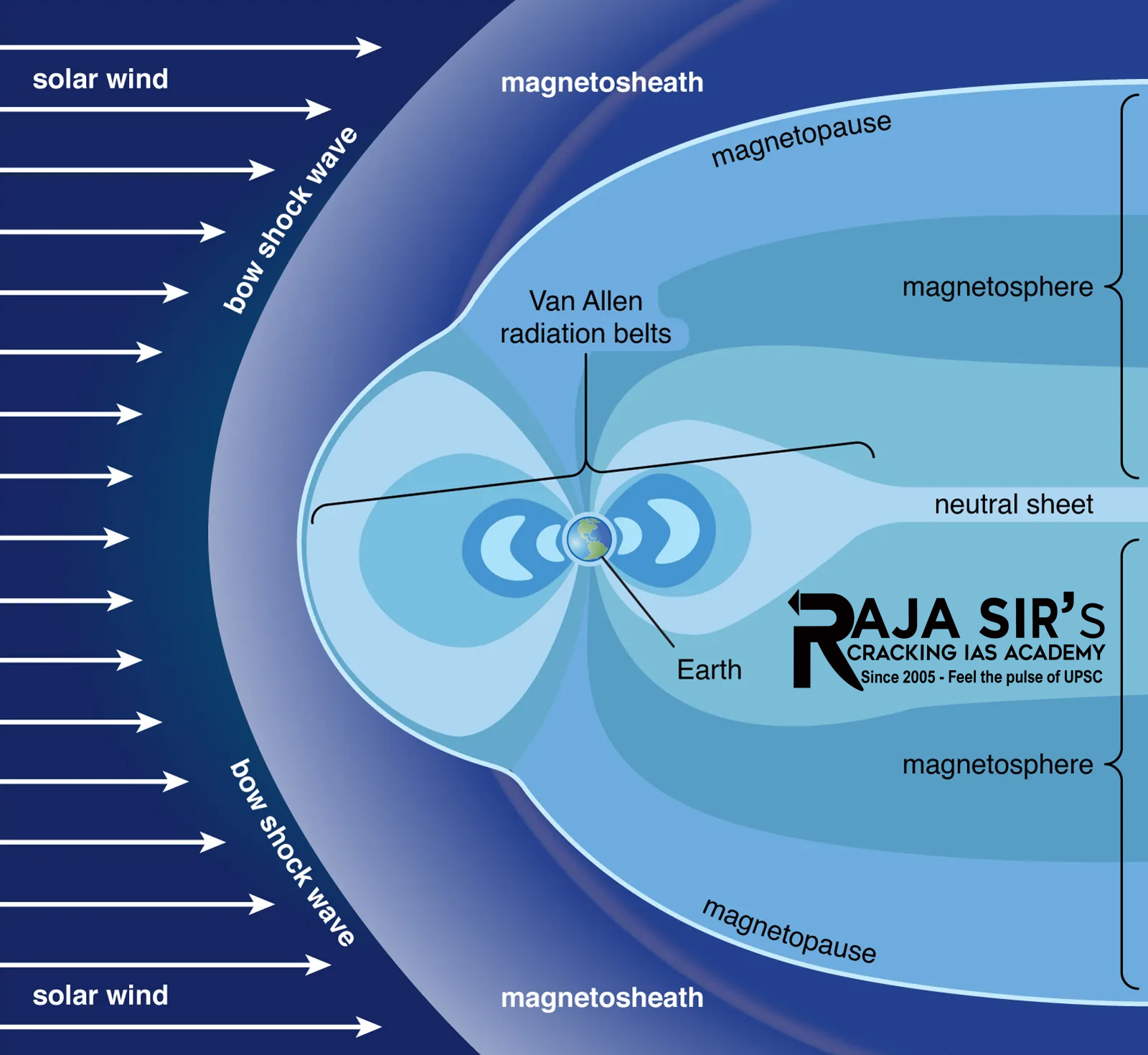- Home
- Prelims
- Mains
- Current Affairs
- Study Materials
- Test Series
 EDITORIALS & ARTICLES
EDITORIALS & ARTICLES
Earth’s Magnetosphere
The Earth’s Magnetosphere, an expansive region enveloping a planet, is characterized by the dominance of the planet’s magnetic field. Generated by the convective motion of charged, molten iron deep within Earth’s outer core, the magnetosphere’s dynamic nature responds to solar, planetary, and interstellar influences. Understanding this intricate system is paramount, offering insights into fundamental space physics and bolstering our ability to forecast and mitigate the impacts of space weather on technology and communication systems.
Earth’s Magnetosphere: A Shield Against Solar Forces
- A Earth’s Magnetosphere is a region of space surrounding the Earth (or any other planet or star) that is affected by the geomagnetic field (or magnetic field of that body).
- Earth’s Magnetosphere : Strongest among rocky planets, shielding us from harmful solar and cosmic radiation and the solar wind erosion.
- Generation: Created by charged, molten iron movements deep in Earth’s outer core.
- Solar Wind Impact: Solar wind compression shapes our magnetosphere, elongating the sun-facing side (dayside) and forming a vast magnetotail on the nightside.
- Dayside Extension: 6-10 times Earth’s radius.
- Nightside Extension: The magnetotail extends hundreds of Earth radii, surpassing even the moon’s orbit at 60 Earth radii.
- Function: It traps charged particles from the solar winds (ions and electrons emitted by the Sun) and funnels them into a plasma.
- Spread: It extends up to 60,000 km on the side facing the Sun and to a greater extent on the opposite side.
- Magnetopause: Its boundary is known as Magnetopause, outside which is a turbulent magnetic region known as magneto-sheath.
- Van Allen Radiation: It contains the Van Allen radiation belts, which contain high energy charged particles.
- Lower Belt: It contains electrons and protons extending from 1000 to 5000 km above the Earth’s equator.
- Upper Belt: It has mainly electrons extending from 15000 to 25000 km above the equator.

Impact of Magnetic Storms on Earth’s Magnetosphere
- Origin: When the strong gusts of solar wind collide with the magnetosphere of the Earth, resulting in rapid magnetic field variation, this is known as magnetic storm.
- Impact: This results in the generation of electric currents in near earth space, which can harm our artificial satellites (eg. GPS) and long-range radio communication.
- Position: Magnetic storms are known as Ring Currents and they are mostly concentrated over the equator.
Importance of Magnetosphere Research
- Space’s Fundamental Science: Studying the magnetosphere helps us grasp its importance in space.
- It reveals the basic science of space, which involves complex electromagnetic actions unlike what we deal with on Earth.
- Understanding our nearby space environment also gives us insights into space everywhere else.
- Space Weather Preparedness: Studying the magnetosphere can better predict and prepare for space weather, which can mess with our satellites and communication systems.
- So, learning about the magnetosphere helps us make better space weather forecasts.









 Latest News
Latest News General Studies
General Studies